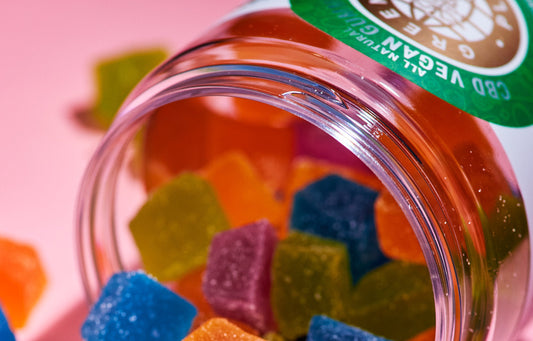The use of CBD products deserves a discussion about the various categories of CBD including their chemical compositions, extraction methods, and side effects documented by experienced users. Consumers should be cognizant of these different CBD groups in order to determine which specific product is right for them. CBD products are categorized as either full or broad-spectrum types of CBD products. CBD-isolate has recently grown in popularity, and is now considered a third type available through some distributors on the market. The proliferation of CBD products can be understood by categorizing them in terms of what they offer to the consumer. It should be noted that the FDA is currently not regulating these products, and research on the topic is still in a preliminary phase. Let’s break down these various types of CBD to better understand both their functionality as well as suitability for a variety of use cases.
Full-spectrum, broad-spectrum, and isolate CBD extracts are characterized by their distinct compositional make-up, allowing consumers to determine which one may be right for them. The reason full-spectrum CBD is considered full is due to the fact that this category contains more cannabinoids generally excluded from broad-spectrum CBD products. Most notably, tetrahydrocannabinol or THC is omitted from broad-spectrum products for those who want to avoid any potentially euphoric events while still benefiting from other cannabinoids and terpenes that are found in CBD products. In general, manufacturers produce full-spectrum CBD with about 0.3% THC, considered only a trace amount.
On the other hand, broad-spectrum CBD extracts contain a cannabinoid generally omitted from full-spectrum extracts known as cannabinol (CBN). This compound is non-psychoactive and garners much attention in the media for its association with mitigating seizures and inflammation including its antimicrobial properties. Although CBN is primarily found in these broad-spectrum CBD extracts, there exists varying degrees of efficacy and concentration in these products depending on success of extraction and quality of the product in general. Buyers should seek out reputable vendors to ensure that they’re buying an optimal, trustworthy product.
The third type of CBD produced by manufacturers is CBD isolate. A good thing about isolate is that a user has reliable confidence that THC is completely omitted from its composition. This can help users determine if CBD alone provides the necessary relief for ailments devoid of other cannabinoids.
Vendors, manufacturers, and users alike claim that full-spectrum CBD products are generally more effective than their broad-spectrum counterparts due to the fact that the former contain a wider variety of compounds - primarily minute amounts of THC - than the latter. Preliminary research concerning this claim has pointed to something known as the entourage effect, where cannabinoids in aggregate may contribute to a heightened experience for the user based on this diversity of composition. Because full-spectrum CBD products are more comprehensive in their cannabinoid profile, the entourage effect may be the contributing factor why full-spectrum CBD is considered more efficacious and popular among its users. However, one should be aware that the lack of regulation means some distributors may use the terms interchangeably and this can lead to confusion about what the product entails.
Processing CBD and Extraction
The processing steps in manufacturing CBD entail four modes of extraction of cannabinoids and terpenes. In the first, CBD oil is extracted from plant material with carbon dioxide (CO2), stripping the plant of its cannabinoid compounds. This is considered the most effective and efficient means for CBD oil production. The second-most popular method for producing CBD extract is similar to the process with CO2, except steam from water is used as the separating agent. This is considerably less effective than CO2 extraction, however, steam removes oil from the plant in a similar fashion and . Third, some manufacturers use solvents to extract CBD oils from the plant. This method has been met with ample criticism as it has been linked to some serious health risks. Lastly, the use of lipids as a means for extraction have become a recent and popular means for production. As CO2 and solvents have lost popularity among health-conscience users, lipids have proven to be a potential substitute that could provide an alternative and much safer means for extraction. These processes vary in efficacy, success, and popularity, determined primarily by the category that the manufacturer intends to produce.
CBD - Pros and Cons
In weighing the pros and cons of each CBD category, users should consider each one’s potential side-effects in order to determine which one is right for them. Full-spectrum CBD may provide mental health benefits that are excluded by broad-spectrum and isolate categories. On the other hand, broad-spectrum CBD often has higher amounts of cannabinol, a non-psychoactive cannabinoid credited with anti-seizure and anti-inflammatory properties.
Therefore,broad-spectrum CBD is generally more popular for seizure treatment among children whereas full-spectrum may be better for those who want an added mental health benefit. Lastly, those worried about passing THC-related drug tests should be mindful that cannabinoids in full and broad spectrum products can trigger a positive result. However, CBD isolate lacks cannabinoids triggered in drug tests so this is a good option for people worried about a positive result.
In conclusion, CBD comes in a wide variety of product lines spurring from these three categories of cannabinoid profiles. Full-spectrum CBD products generally have the widest cannabinoid profile including trace amounts of THC, the contributing factor for cannabis’ psychoactive side-effects. Broad-spectrum CBD is characterized by its lack of THC, and is considered an excellent substitute for those who wish to bypass any psychoactive effects while still reaping benefits from other cannabinoids. CBN is typically found at higher concentrations in broad-spectrum CBD because it is non-psychoactive and is associated with anti-inflammatory and anti-seizure properties. Lastly, users can turn to CBD in its purest form with isolate, which is devoid of any other cannabinoid compounds and can aid the user in determining if the CBD compound alone can provide benefits. It should be noted that the paucity of research and lack of regulation of CBD products means that these categories are not mutually exclusive and some degree of overlap may exist depending on successful extraction and distributor integrity.




